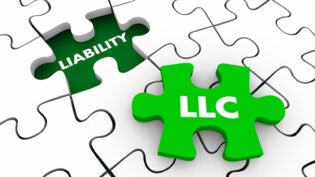
In my experience with technical entrepreneurs, they work hard on creating an innovative product and elegant solution, and assume that customers will flock to them (“if we build it, they will come”). The reality is that successful businesses these days require an equally elegant business model, with the right marketing, delivery channel, price, and target customers, to get real traction.
In fact, many experienced entrepreneurs argue that constructing a business model around your solution is far more critical and difficult than developing the product. Certainly the knowledge and skills required are different. That’s why I recommend that two co-founders are often better than one — with one expert on the technical solution, and the other with business model experience.
This dual-leadership approach would have avoided the disaster I experienced in a startup a few years ago where beta customers loved our software solution as a free prototype, but we couldn’t sell a single one for the full price that seemed reasonable for all our work and innovation. The founder had simply not done the work to validate a price and the perfect customer segment.
In the investment community, this work is called proving the business model. It starts with validating a business opportunity (a large customer segment willing to pay money to solve a real problem), in much the same way as your proof of concept or prototype validates your technical solution. Here are seven steps I recommend for establishing the right business model:
- Validate your innovative product with real customers. Customers often complain that existing approaches are not intuitive or integrated, while old solutions may be familiar and locked in. Estimate your costs, including a 50 percent gross margin, as a lower bound on a price. Products too expensive for the market won’t succeed, and prices too low will leave you exposed. Match with competitor prices and market demographics.
- Confirm that your solution effectively solves the problem. Once you have a prototype or alpha version, expose it to real customers to see if you get the same excitement and delight that you feel. Look for feedback on how to make it a better fit. If it doesn’t relieve the pain, or doesn’t work, no business model will save you.
- Finalize your channel and marketing strategy. Now is the time to pitch the business model to a group of customers or a specially selected focus group. This is not just a product pitch, but must include all elements of your pricing, marketing, distribution and support. Here again is your chance to make pivots for almost no cost.
- Test your model with industry experts and investors. An advisory board of outside people with experience in your domain can give you the unbiased feedback you need, as well as connections for setting up distribution and sales channels. It’s also valuable to talk to potential investors for their views, even if you are bootstrapping the effort.
- Execute a pilot plan in with a limited geographic scope. Good traction on a limited rollout is great validation of a business model. It allows you to test costs, quality and pricing in a few stores or a single city, with minimum jeopardy and maximum speed for recovery and corrections. Save your viral campaign and major inventory buildup for later.
- Make every pilot customer commit to be a reference. Give extra attention to those first few customers, and ask for publishable testimonials and word-of-mouth support in return. If you can’t get their support, even with your personal efforts, take it as a red flag that the business will probably not scale at the rate you projected.
- Get national visibility at trade shows and industry meetings. You need positive visibility, credibility and feedback from these organizations as a final validation of your business model, as well as your product model, in the context of major competitors. This may also be a great source for leads as a key part of that final rollout and scale-up effort.
Your business model may be a more sustainable competitive advantage than your innovative product, or it can be your biggest risk exposure. Too many of the business plans I see are heavy on competitive product features, but light on business model details and innovations.
If you or someone on your team hasn’t spent at least the same effort on the business model as on the product service, you are only half prepared for the real world of business today. It’s hard to win by doing half the job, especially if that is the easier half.












